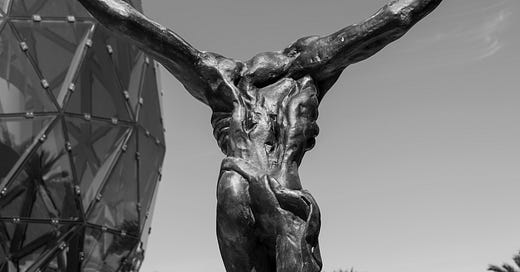Personally, it has been an enriching Lent as I’ve tried to get a clearer picture of the Suffering Servant’s selfless sacrifice as he bore our sins, sicknesses, and sorrows. This week I’ve been meditating more on the significance of his having been crucified naked. The shame he endured makes certain the claim of Hebrews that we “do not have a high priest who is unable to sympathize with our weaknesses . . .” (Heb. 4:15 NRSV). Anyone shamed by abuse has a sympathetic Savior.
It wasn’t until about twenty years ago that I even knew he was naked on the cross. At that time, I was reading Stephen Seamands’s incredible book Wounds that Heal: Bringing Our Hurts to the Cross (IVP, 2003). Having done his PhD. work on the atonement, Seamands’s grasp of Good Friday’s significance is incredible, and yet it masterfully spells out his insights so clearly.
His chapter titled “Disregarding the Shame” provides the details regarding the humiliation of being crucified. The horrors of crucifixion were reserved for peasants and criminals who were not Romans. Citizens found guilty were simply beheaded, sparing them the pain and shame. So distasteful was this torture to the upper classes, its practice was rarely mentioned in the literature of that day.
My generation grew up with images of Jesus and the thieves with loin cloths. But Early Church artists simply added the cloth out of respect for their Savior.
Nakedness, of course, reminds us of Adam and Eve’s creation in the Garden of Eden. Something I learned recently adds a powerful punch to the significance of their naked state. Genesis 2:5 through 3:21 describes the creation of Adam and Eve followed by the fall—a single narrative written in chiastic form. As with any chiasm, the central verse is the most important. It provides the pivot point for the entire passage.
What was that pivot point? Verse 2:25: “And the man and his wife were both naked, and were not ashamed.”
Shame free nakedness was part of God’s grand design. Once eyes were opened, as Satan promised they would be, that innocence was lost. They grabbed fig leaves to cover themselves and hid among the trees.
As is often noted, the shedding of blood to make garments for Adam and Eve pointed to the blood of Jesus Christ who would also cover our own shame by embracing shame itself on the cross. Even as Hebrews reminds us, we are to follow the lead of Jesus, “the founder and perfecter of our faith, who for the joy that was set before him endured the cross, despising the shame, and is seated at the right hand of the throne of God” (Heb. 12:2 ESV italics added).
Down through the centuries, people have been forcefully stripped of their clothing to abuse or humiliate them. Others voluntarily have bared themselves for profit, acceptance, or popularity. Shame, whether we are bludgeoned with it or blind to it, has a toxic effect. But our wonderful Savior endured the shame for our healing. Truly his humiliating death and exultant resurrection serve as the pivot point of all history.
The writer to the Hebrews, as mentioned earlier, emphasized how our high priest can sympathize with your weaknesses, including shame. The very next verse states, “Let us therefore approach the throne of grace with boldness, so that we may have mercy and find grace to help in time of need” (Heb. 4:16).
What is your need today? Healing for those moments when you were so humiliatingly exposed? Or grace to continue to minister to the last, the least, and the lost who have been shamed by the devastating Tsunami? May the Risen One meet you powerfully this Easter, enabling you to know him more deeply, endure more patiently, and walk in his great anointing for the healing of others.







This was so thought provoking. I never knew about Jesus being naked and that does bring another level of what he bore for me on the cross.
Good word! Many have found refuge in his nakedness. Happy Easter to you and yours!